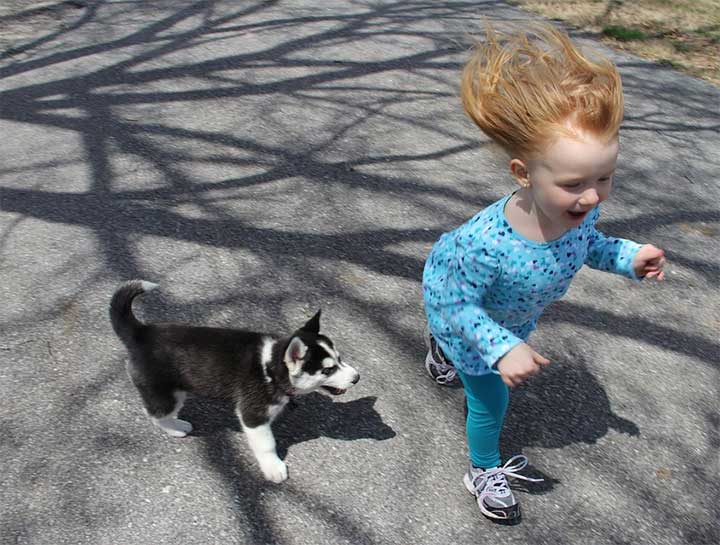Leader of the Snack

On the average day, over half of the pets that I treat are ‘heavier than ideal,’ and about 10 percent are what I would call morbidly obese—meaning that their weight is going to cause serious health problems in the near future.
Most owners feel guilty when told their pet is too fat, but I’ve come to realize that it really isn’t their fault—the feeding of our pets is an innate human behavior—almost as basic as laughing or walking.
Even toddlers seem to understand this relationship. Children don’t need to be coached to share their food with the family dog. Instead, youngsters take great delight in throwing handfuls of delicious bounty off of the high chair tray and down to the waiting furry friend below.
People Training Dogs
This human-dog dynamic—the exchange of food for affection and protection—is probably what domesticated the dog in the first place. Pavlov explored this relationship further when he would ring a bell before every meal for the dogs. Pretty soon, the dogs were drooling as soon as they heard the bell. The dogs became conditioned to perform the behavior of drooling in response to the bell and not the food.
Dogs Training People
If you are one of those owners who gives your dog a treat every time you open the fridge or every time he does something cute, then it is time to ask "for whom the bell tolls.” In other words-- who is ringing the bell and who is performing the behavior? Many owners don’t even realize that their dog is the trainer who has taught the person to feed them on command. Oh, we are so easily trained . . .
Cleverly, dogs gradually train their owners. A dog’s introductory training course starts with him asking for an extra treat every once in awhile. Then, if you are ‘smart enough’ to be trained, the dog will expect a treat whenever he performs a behavior (e.g. barking, sniffing at the treat cabinet, etc.) You’ve entered the advanced class of dog training when your dog goes to the food bowl and then looks at you with big, sad eyes. This passive-aggressive canine is saying “I’d eat this horrible food, if only you loved me enough to put some chicken on it.” Tsk, tsk.
And you are the college level if your dog will only eat when you hand feed him. People! Have you lost your minds? You’re hand feeding your dog—and I’ll bet that he isn’t that skinny, is he? Do you really, really think he'd let himself starve if you weren't hand feeding him?
Dogs that are overweight are at a far greater risk of heart disease, diabetes, and arthritis. Research has proven that overweight dogs don’t live as long and they have more health problems—in other words, your dog may look fat and happy, but he’d be happier (and live longer) if he was a little leaner.
Don’t allow your dog to be the Leader of the Snack. Instead, offer him two measured meals at specific times of the day. Give him fifteen minutes to eat his food, and if he doesn’t eat it, then pick up the food. Within two or three days, he will be eating at mealtime--- without drama or hesitation. I recommend counting out a very limited number of treats. When the treats are gone, they’re gone. Be tough, and don’t feel silly that you’ve been trained by your dog. After all, it isn’t all your fault, we’ve been hard-wired to do it!
Article written by Dr. Jon Klingborg, DVM
Please feel free to distribute this article (at no charge) via all media— all we ask is that you give credit to the author Dr. Jon Klingborg. You will find him at the best veterinary hospital in Merced, California– Valley Animal Hospital. www.vahmerced.com and www.valleyanimalmerced.com Copyright 2015 by Jon Klingborg, DVM
